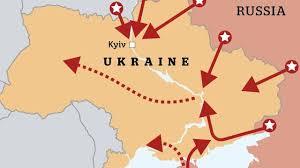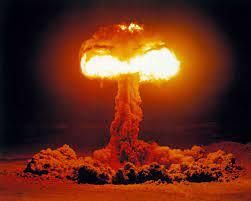
As a PSC staff lawyer, I got frustrated when an administrative law judge couldn’t make up his mind on a ruling. “It should be me up there!” I told myself. So I applied for the job and got it. I think I was a pretty good decider.
So too in life. Not one to agonize over decisions, I’ve become convinced that generally, more deliberation doesn’t make them better. And when I decide on something, I’m all in. No half measures.
America and Europe are helping Ukraine fight Russia — with a strength of commitment perhaps unexpected. Yet they’re far from doing all they can. France’s Macron says Russia should not be “humiliated.” Germany’s Scholz heralded an “historic turning point” in foreign policy, promising heavy weapons, but still agonizes in public, and Germany seems to be dragging its feet. President Biden has been at pains to say we’re not fighting Russia, nor seeking regime change.
Well, why not?

In hindsight, as soon as a Russian invasion was looming, we should have put U.S. troops and weapons into Ukraine. Following Vegetius’s ancient dictum, if you wish for peace, prepare for war. Of course Putin would have gone ballistic. But what would he have done — any worse than what he did do? While the prospect of a direct confrontation with U.S. forces might have persuaded him to back off altogether.
Now there’s fear of escalation to nuclear war. Putin threatened that. It seems to have worked, intimidating us as to what help we will or won’t give Ukraine.
So Biden ruled out a no-fly zone, and anything else that might be seen as America fighting Russia. Yet that’s certainly how Putin saw it from the start. Thus limiting ourselves to half measures, to avoid provoking Russia, seems silly squeamishness. Russia already acts maximally provoked.

And if we fear Ukraine’s success might cause Russia to go nuclear, then why help Ukraine at all? What exactly is the strategic aim? A stalemated war that drags on for years?
The Economist recently analyzed the nuclear aspect. Noting numerous ways in which what once seemed an absolute taboo on nuclear weapons use has eroded. Putin’s threat the latest and most serious breech of that taboo. As if just talking about it makes it actually more thinkable.
But two points should be borne in mind. First, Russia’s military operates under the doctrine that nuclear weapons are only a last resort against an existential threat. Ukraine clearly does not qualify, so it’s doubtful they’d permit Putin to use nukes there. And secondly, even Putin should be deterred by the unforeseeable and likely grave repercussions. Too risky even for him. His threats should be seen as bluffs.

Meantime, The Economist says those arguing for a quick accommodation with Russia to end the war “could not be more wrong.” That would not make Europe safer, it would make Russia (and other bad actors) more dangerous. Must we repeat the lessons of appeasement in 1938-39? Allowing Putin to get away with his military aggressions before 2022 surely encouraged him to up the ante in Ukraine. There are plenty of other places an emboldened Russia could invade.
